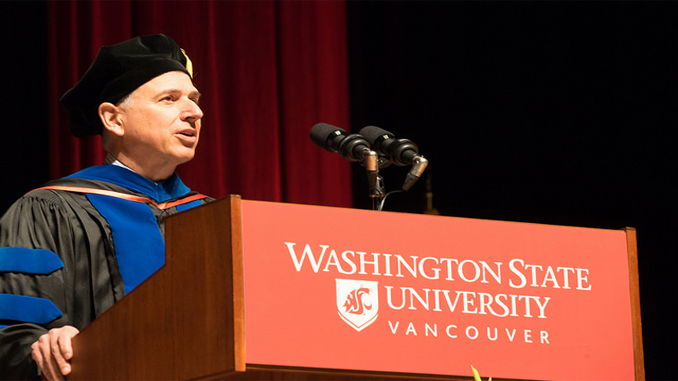A new semester is underway, and for many graduates-to-be that means the end of a 120 credit journey. Was it accomplished in four years? Six? It’s easy to be confused on what counts as a full-time load and what is necessary to graduate on time.
Generally, students are ready to graduate after four years and 120 credits. That is, if they took on a full-time load of classes. Yet this is where the waters become murky. What exactly is a full-time load? Under financial aid guidelines, it’s 12 credits per semester.
At this rate, however, a student needs 10 semesters or five years to graduate.
Where does this disconnect of information and ideas come from? Why is 12 credits considered full time if it’s not enough to get students to graduate in four years as expected? Should 15 credits be the minimum full time requirement, and 12 be considered part time?

According to Shyanna Reyes in the Student Resource Center, “it’s hard to generalize” the amount of time needed for every student to graduate. Reyes explains how every students’ experience at WSU Vancouver is different. Some majors have a set schedule at the beginning of their collegiate career while other students transfer credits from AP Classes, Clark College or other programs.
The journey towards that goal varies based on a student’s academic interest. The semester of a mechanical engineer is extremely different than that of a student studying strategic communication. Despite the differences, one thing that remains the same is the number credits needed to obtain a degree.
Along with the difficulty of generalizing due to the complexity of different degree requirements, the Vancouver campus faces another obstacle. “Our students have more commitments,” explained Student Resource Center Manager, Bill Stahley. As a commuter campus, WSU Vancouver is a university with a diverse academic population.
According to the WSU Vancouver website fact sheet, the average student age on the Vancouver campus is 26, with first generation students occupying 44 percent of the student population and the average new transfer GPA is a 3.20.
These facts alone suggest a variety of reasons as to why advisors may not be inclined to recommend 15 credits. Stahley expanded on the idea of how starting with a low amount of credits is a way of easing into academic responsibilities.
“A lot of students pick our campus because they are able to keep their jobs. They’ve got their family commitments. All these other things they are trying to balance and school is just another important priority.”
Although there may be a financial advantage to taking more credits, such as more financial aid if a student is at or above full time, it isn’t going to be as easy with a full-time job and family. This idea contributes heavily to the timeline towards graduation. For some, attending full time is not possible when contributing factors are considered. For others who may live at home with no children or job, 17 credits may be a feasible option.
Stahley also mentioned a two credit course that is new to the Vancouver campus. The class, University 104, is intended to act as a “major exploration” course and a way of helping students decide on a major early on in their undergraduate journey. Taking a class like this can help students get a taste of an area of study, and adds an additional two credits to their transcripts.
Starting with a smaller credit load doesn’t necessarily put students too far back, Stahley says. “There are a number of four credit classes. If you start out with 13 and then you have a couple of 16 credit semesters, you’re right back on track.”
“In terms of an advising practice, we’re really on the side of the students to find out what pace works for them. We just want students to be successful,” Stahley says. If that means taking less courses in order to be more successful over a longer period of time, then that’s what it takes.
Congratulations to everyone starting their last semester. You’re just a few credits away from that 120 goal.
For more information on credits and graduation dates, contact an advisor from your department.

Great article Bailey!
Thank you!